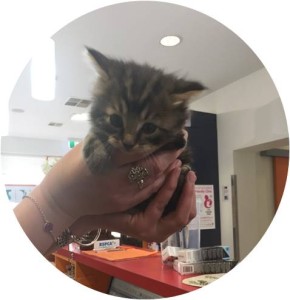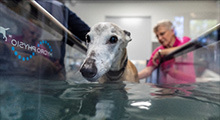getting your puppy started off on the right paw!
Bringing a new puppy into a household will be a scary experience for your pup and it will result in a period of adjustment for them. Your job as the owner is to make them feel at home at their new place of residence, they will be leaving their mother and siblings so they will most likely feel uncomfortable and miss them. Your families efforts will pay off when you witness your puppy grow into a sociable, confident and affectionate dog.
Checklist of what to buy before your puppy comes:
- Food and water bowls
- Food
- Crate with crate pad
- Chew appropriate toys – puppy kongs, chew bones
- Puppy collar and leash with identification tag – pets name, your number and your vet’s number
- Bite sized treats for training and rewards
- A baby gate or play pen to confine where your pup goes
- Disinfectant sprays, carpet cleaner ( things that mask the smell so your puppy doesn’t continue to eliminate in the same spot inside)
- Poop bags
- Brush, nail clippers
For more information about bringing a puppy into your home, click here.

The kitten will rely on you completely to help move them from their mother’s side to an unknown new home. Your kitten  won’t just be leaving their mother they will be leaving their sibling’s side and familiar surroundings.
won’t just be leaving their mother they will be leaving their sibling’s side and familiar surroundings.
Everyone in the family must contribute to the planning of how to make your kitten feel comfortable in your home. Your efforts will pay off when you see your baby grow up into a friendly, outgoing and loving kitten. To enable your kitten to become comfortable in the surroundings of your home, there are a range of things you as an owner can do. Click here to find out how.
Did you know we are the First Cat Friendly Practice in Adelaide? Click here to read more about being a cat friendly practice!
Pups must be between 7 – 13 weeks of age and up to date with their puppy vaccinations when starting the course. During this age it is vital that puppies are appropriately socialized in order to prevent future behavioral issues, such as anxiety, fear etc. It is also detrimental to their confidence and learning that they experience as much as possible in the safety of our clinic.
After 16 weeks of age, they enter another distinct phase of their development which is not suitable for this class. If in doubt about your dog’s eligibility, please call us. Different breeds and individual pups develop at slightly different rates.
Click here to learn more about Puppy Pre-School!
- Our course has now changed from 4 to a 5 week school, this allows for more time to inform your puppies and owners!
- No puppies allowed in the first week, this enables our trainers properly inform all the owners with no distractions of all your cute puppies!
- We are now providing each puppy with a Pet Universe bandana which is sprayed with Adaptil, this is a dog appeasing pheromone, which allows your dog to stay calm and enables peaceful socialization between puppies.
- Lastly, We are now using food puzzles and treat balls for teaching purposes!
Click here to learn more about Puppy Pre-School!
Raising Kittens

This time of your kitten’s life will be quite unknown and you will find yourself asking questions if certain things are normal for your baby to experience. It is important to note that for the early weeks of your kittens life, they will spend a lot of their time sleeping, so don’t be alarmed if they seem lazy.
For some frequently asked questions for new kitten owners, click here.
You bought your child a kitten for Christmas, so what comes next?
Bringing a cuddly, bundle of joy home is an exciting and stressful time.
The transition from your kitten’s home to their new home takes planning and patience, everyone in the household will need to contribute and be a part of it. Your families efforts will pay off when you witness your kitten grow into a sociable, confident and affectionate cat.
Checklist of what to buy before your kitten comes:
- Scratching post
Cats enjoy a good scratch and need to do this. Making a scratch post available will provide them with a substitute instead of destroying carpet and furniture
- Litter boxes and cat litter
- Bedding
- Food and water bowls
- Toys and treats
- Kitten Food
- Cleaning supplies
- Cat collars , leashes and carriers (for trips to the vet and other adventures)
For more information about bringing a new kitten into your family, click here

Your kitten is going to be oh so playful when they are exploring their surroundings as they grow up. It is important that you as an owner intervenes and have your own play time with your kitty. Click here for the best ways to play with your kitten and other important information for mischievous kittens!
My dog has been bitten by a snake. Will he die?
“It depends on the species of snake. There are many deadly snakes in Australia – below we have listed the top ten deadliest species.”
Top 10 Venomous Australian Snakes
- Eastern Brown Snake
- Western Brown Snake
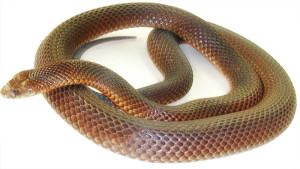
- Common Tiger Snake
- Inland Taipan
- Eastern Taipan
- King Brown Snake
- Common Copperhead
- Eastern Small-Eyed Snake
- Southern Death Adder
- Common Black Snake

What are the signs of snakebite?
When an animal is bitten by a snake, it is generally bitten on the nose (from sniffing in undergrowth) or in the paw area.
GENERAL SIGNS:
- Drooling
- Trembling
- Excitement
- Vomiting
- Collapse
- Dilated pupils
- Rapid pulse
Symptoms often can occur within 15minutes but sometimes later depending on the age of the snake. Generally speaking the baby snakes are considered far more dangerous as they do not have a control on the reflex venom release whereas adults do. This is not to say that adults are not dangerous.
How is a diagnosis of snakebite envenomization made?
Diagnosis is primarily made on medical history and clinical signs. If the type of snake is unknown, diagnosis and treatment will be directed at the presenting clinical signs.
What first aid treatment should I do on my way to the veterinarian?
“If possible, carry the dog rather than allowing the dog to walk.”
1. Minimise the animal’s movement:
The poison will spread a lot faster throughout the body if there is excessive movement. Keep the animal quiet and calm
2. Ignore the bite wound:
Do not attempt to suck, squeeze or cut the venom out of the wound, this will increase the blood supply to the area and make the condition worse
3. Lower the limb:
If it is the leg, paw or tail that has been bitten, keep the limb below the heart. This will slow the spread of the poison
4. Bandage the whole limb:
Apply a firm bandage over the whole limb to immobilise it and therefore reduce the rate at which the poison can spread.
5. Apply an Ice Pack:
Apply an ice pack to the area and firmly bandage it in place. This will slow the spread of the poison.
6. See a Veterinary Surgeon immediately:
When treated properly, with Anti-venom and other medications, further complications can be prevented and lives can be saved. You have up to 2 hours for effective anti—venom application so it is important not to panic, jus t get to a vet as soon as you safely can. Be prepared the trip to the vet may be unpleasant, if you have help that will take a lot of stress off you and will hopefully prevent you pet from bouncing around in the car, remember POINT 1.
t get to a vet as soon as you safely can. Be prepared the trip to the vet may be unpleasant, if you have help that will take a lot of stress off you and will hopefully prevent you pet from bouncing around in the car, remember POINT 1.
What is the treatment for snakebite envenomization?
Venomous snakebites are medical emergencies requiring immediate attention. Before treatment is begun, it must be determined whether the snake is venomous and whether envenomization occurred. Fortunately, a venomous snake may bite and not inject venom (“dry bites”). When no envenomization occurs, or if the bite is inflicted by a non-venomous snake, the bite should be treated as a puncture wound. Non-venomous snakebites are generally treated with wound cleaning, antibiotics, anti-histamines and anti-inflammatory medications as indicated.
“The correct treatment of venomous snakebites depends on the type of snakebite.”
The correct treatment of venomous snakebites depends on the type of snakebite. Treatment to counter shock, low blood pressure, infection and respiratory distress is indicated in most cases of venomous snakebites.
What is the prognosis for a dog bitten by a snake?
The prognosis depends several factors, including: the size and species of the snake; the amount of venom injected; the number of bites; the location and depth of the bite (bites to the head and body tend to be more severe than bites to the legs or paws); the age, size, and health of the dog; the time elapsed before treatment; and the dog’s individual susceptibility to the venom. The location of the bite is important. Swelling from bites around the muzzle and face can lead to breathing difficulties due to obstruction of the airway.
“The location of the bite is important.”
DON’T make the fatal mistake of leaving your dog in the car this summer.
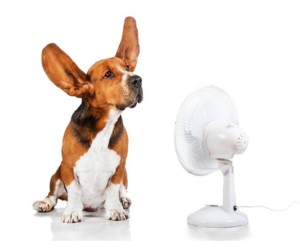
Dogs are different to humans, they don’t have the same safety sweating mechanism that we have to stay cool. They can only perspire by panting and are consequently vulnerable to a sudden rise in body temperature during hot days.
If you think it is safe to leave your dog in the car, even with the windows open you are sadly mistaken.
The inside temperature of a car can reach over 50°C after just five minutes when the temperature outside is 32.5°. The testing also found that in less than two hours the inside temperature of the car reached 75°C. Additionally, having tinted windows, leaving the car in the shade or having a light colored car didn’t reduce the cabin temperature by a noteworthy amount. All of these tests were conducted by RACQ.
The RSPCA are running campaign about how dangerous it is to leave your dog in the car – “You could lose your best mate in just 6 minutes” http://justsixminutes.com.au/
It’s not just cars that can heat up in the summer months; people often forget how hot your house can get while you are at work.
Sunlight seeps into your house where your dog is and can quickly cause an unbearable environment that the dog cannot escape. Old houses with little or poor insulation and small rooms are more probable to reach dangerous temperatures.
What to look out for if your dog is overheating:
- Deep panting.
- Rapid Heart rate
- Dry or pale gums.
- Dehydration
- Increased drooling.
- Heavy and rapid breathing
Arranging a cool environment for your dog to relax while you are at out or at work facilitates their comfort but more significantly their safety and survival.
How to help your dog stay cool:
- Always having a bowl of water available to your dog, that is not in direct sunlight
- have a couple of containers in case one is spilt over
- put ice in the water to keep it cool for longer
- Remove heavy quilts and bedding from your dog’s bed/kennel
- Keep blinds and curtains closed during hot days to stop direct sunlight entering
- keep a fan or air-conditioner on in an area that is likely to heat up
- If possible keep your dog inside
- If your dog is kept outside make sure there is a shady spot
- Be cautious not to overwork your dog, take it on relaxing walks or give it a break from walks on scorching days
- Walk your dog in the morning or early evening when the weather isn’t so hot
- Wetting your dogs paws and misty water on their face, this a great option as they control their inner temperature through their feet
What to do if you think your dog is showing signs of heatstroke?
Firstly take your dog out of the heat into a cool shaded area. Allow your dog to drink a small amount of cool water. Wet your dogs paws with some water and dampen the dog with a small amount of water, don’t drenched your dog with water as the body temperature may change suddenly which can lead to other problems. If your dog is showing no sig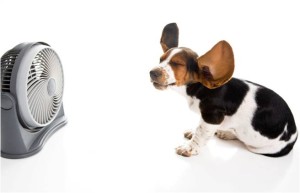 n of improvement contact your vet or take it to a vet hospital.
n of improvement contact your vet or take it to a vet hospital.
If you have any questions regarding your dog over heating or heat stroke, please don’t hesitate to contact Pet Universe to speak to one of our friendly team members.
North Gate: 08 8369 3111
Broadview: 08 8266 4666

What are Complete Care Packages?
Complete Care Packages (CCP) is an Annual Preventative Health Care plan for your pet. The CCP includes a range of products and services to keep your loved one happy and healthy. There are a range of packages but generally all the packages include: vaccinations, flea & heartworm treatments plus additional goods with an annual saving of $200 or more per year.
Pet Universe offer Monthly Payment Plans, the package can be paid in 12 monthly installments which helps with budgeting.
Regardless of the age of your dog or cat, we will find a health care plan that fits for you. We offer Adult Dog and Cat, Senior Dog and Cat and Puppy and Kitten Plans. To view our range of packages and what is included, click here.
What are the advantages of purchasing the CCP?
These packages are an easy way to get the best healthcare for your pets. It enables you to keep your pet up to date with their vaccinations and checkups.
The cost savings equate to over $200, compared to if you were to buy everything individually. It gives you peace of mind that everything is taken care of your pet for you. Pet Universe will send reminders of when vaccinations and other important checkups are due. Excitingly the new improved CCP now have a free dog lead or cat carrier luggage tag, PLUS CCP members don’t have to pay the Sunday consultation surcharge fee.
All the products and services included in our annual preventative healthcare plans are those we use ourselves on our own pets – so they are tried and trusted. The aim of the packages is to make gold standard healthcare affordable and easy. It’s all part of living up to the Pet Universe motto… “Healthcare from your pet’s point of view”.
« Previous Page — Next Page »




